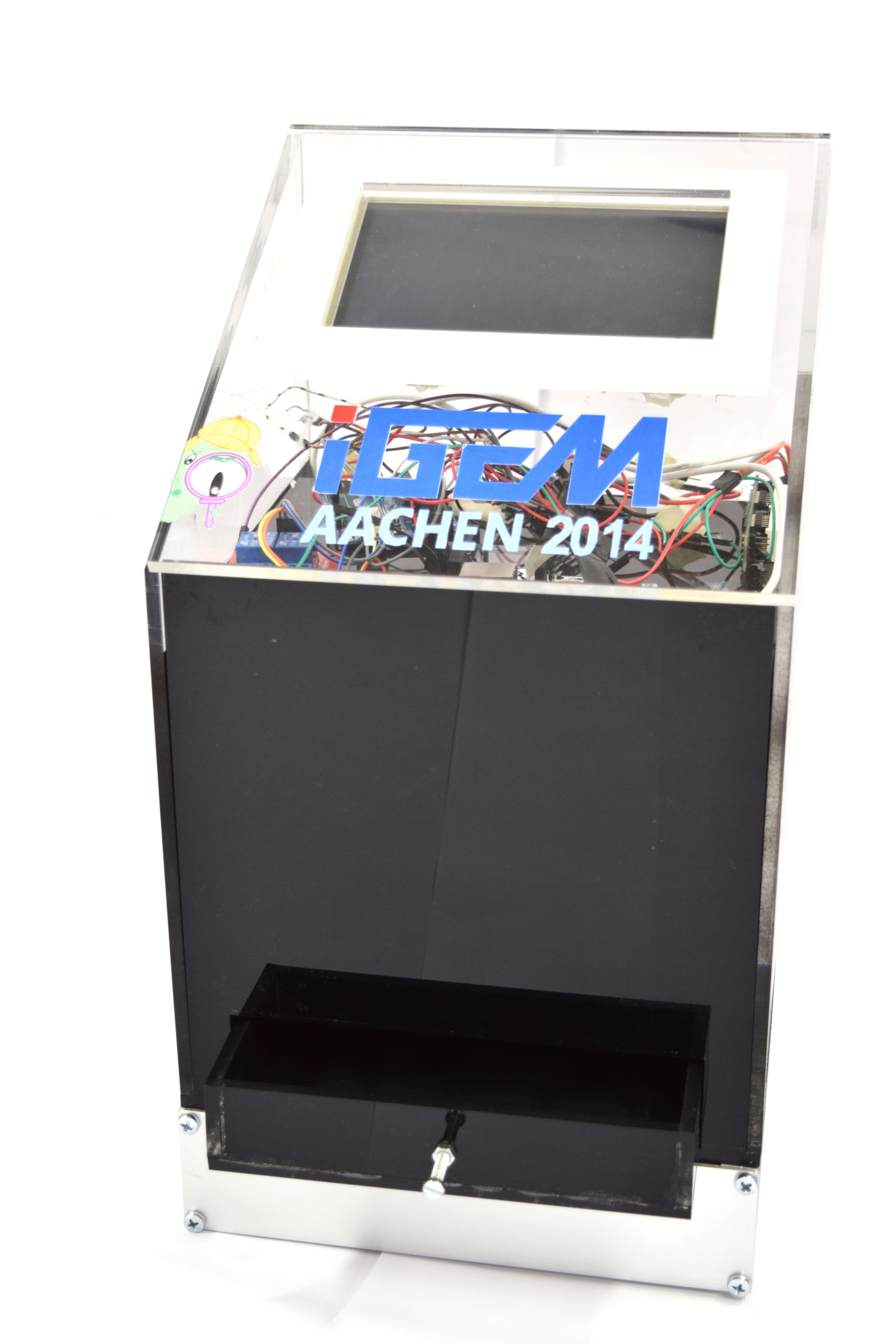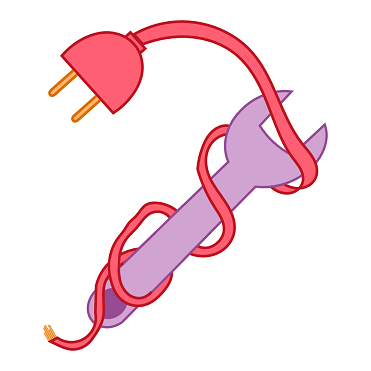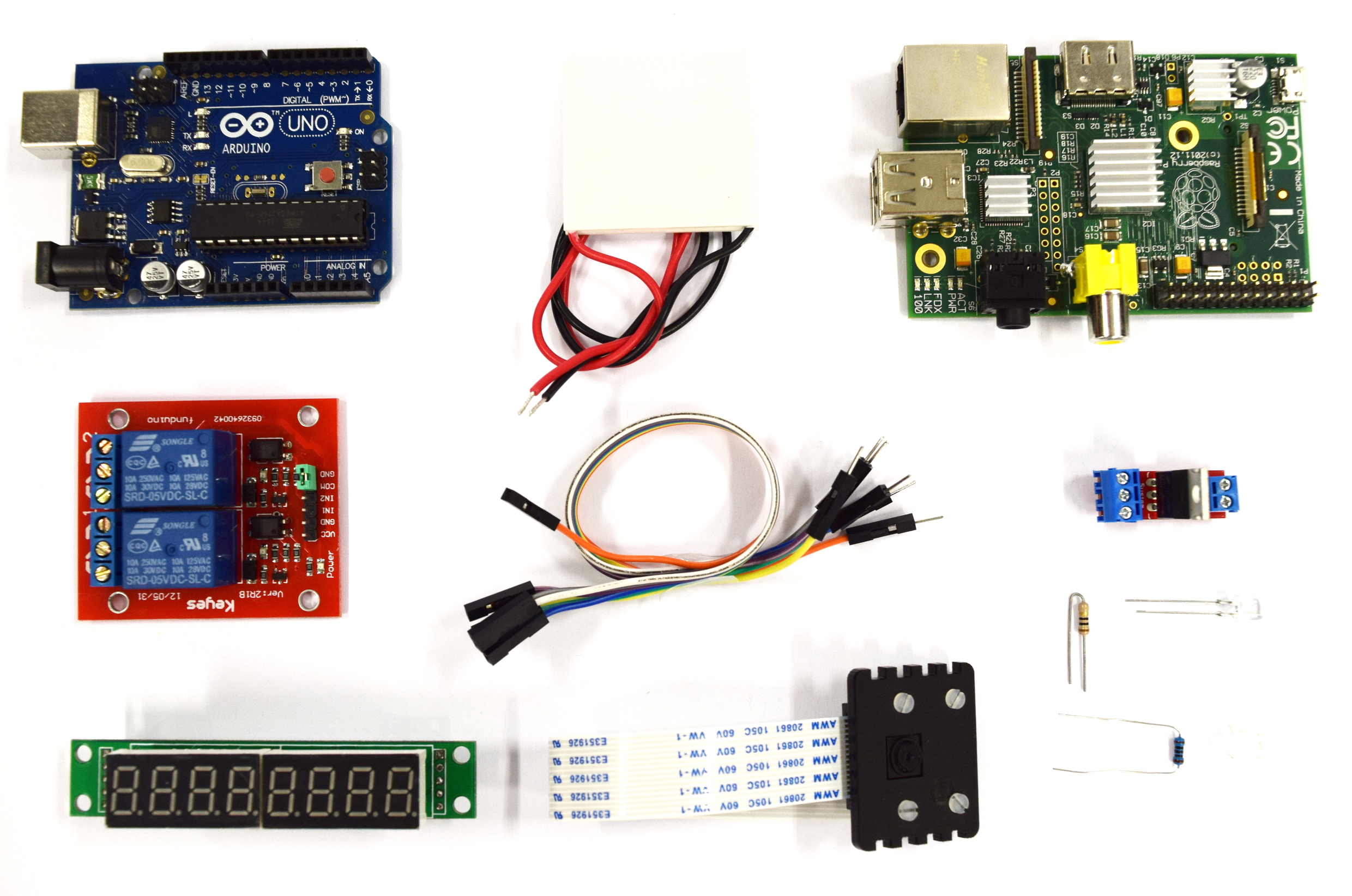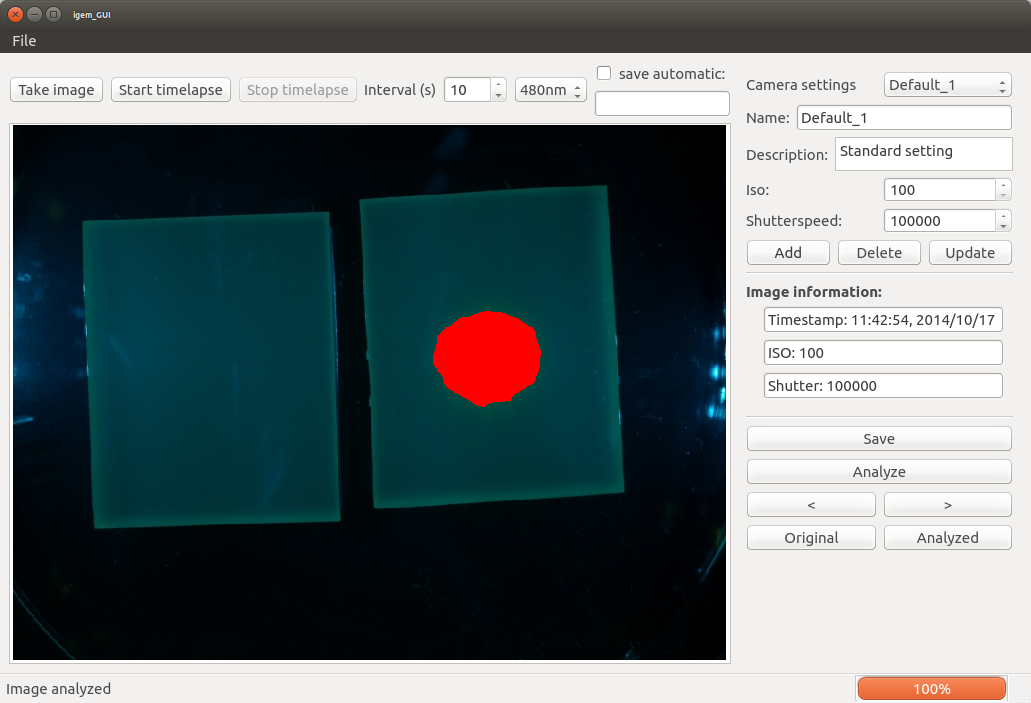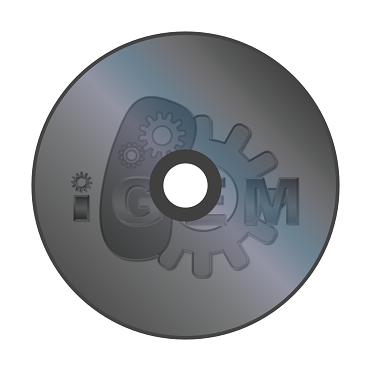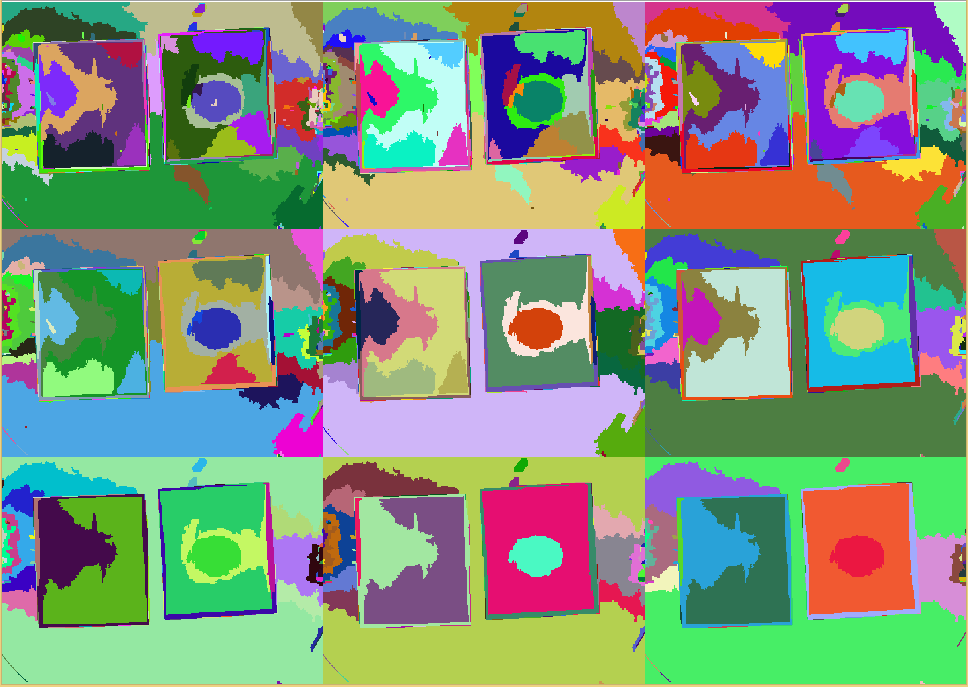Team:Aachen/Project/Measurement Device
From 2014.igem.org
(→Modus Operandi) |
(→WatsOn) |
||
| Line 7: | Line 7: | ||
<html><br></html> | <html><br></html> | ||
| + | {{Team:Aachen/FigureFloatRight|Aachen_Device_11.jpg|title=''WatsOn''|subtitle= |width=270px}} | ||
The ''WatsOn'' device aims to answer the central question "What's on the chip?". The device is designed to incubate the sensing cells and capture images. <html><br></html>The interactive ''WatsOn'' software enables the end user not only to take images and time lapse shootings, but also analyzes the images and visualizes the presence/absence of a pathogen. | The ''WatsOn'' device aims to answer the central question "What's on the chip?". The device is designed to incubate the sensing cells and capture images. <html><br></html>The interactive ''WatsOn'' software enables the end user not only to take images and time lapse shootings, but also analyzes the images and visualizes the presence/absence of a pathogen. | ||
The construction manual and the technical details are published in our [https://2014.igem.org/Team:Aachen/Notebook/Engineering/WatsOn#watsondiy wiki]. | The construction manual and the technical details are published in our [https://2014.igem.org/Team:Aachen/Notebook/Engineering/WatsOn#watsondiy wiki]. | ||
| - | + | ||
<html> | <html> | ||
<center> | <center> | ||
Revision as of 00:14, 18 October 2014
|
|
|
|
|
|
 "
"
